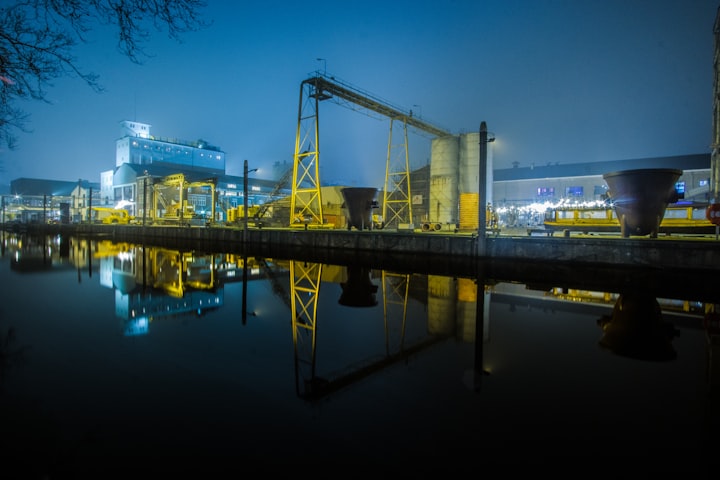Safety Challenges in High Risk Industries
Construction, manufacturing, mining, and oil and gas

Safety Challenges in High-Risk Industries
High-risk industries, such as construction, manufacturing, mining, and oil and gas, present unique safety challenges due to the nature of their operations. These industries involve hazardous tasks, complex machinery, high-pressure environments, and exposure to various health and safety risks. Effectively managing these risks and ensuring the safety of workers is a constant challenge that requires a proactive and comprehensive approach. In this article, we will explore some of the key safety challenges faced by high-risk industries and discuss strategies to address them.
Hazard Identification and Risk Assessment:
One of the primary challenges in high-risk industries is identifying and assessing the potential hazards associated with specific tasks and operations. These industries often involve a wide range of risks, including falls, chemical exposures, equipment malfunctions, and fires. Conducting thorough hazard identification and risk assessments is crucial to understand the potential dangers and develop appropriate control measures. Safety professionals need to be trained in hazard recognition techniques and employ tools like job hazard analysis and risk matrices to prioritize and mitigate risks effectively.
Safety Culture and Behavior:
Establishing a strong safety culture is vital in high-risk industries, where a single lapse in judgment or a momentary disregard for safety protocols can have severe consequences. Changing behavior and attitudes towards safety requires continuous training, communication, and leadership commitment. Safety professionals must promote a culture that emphasizes the importance of safe work practices, encourages reporting of near misses and incidents, and empowers employees to take ownership of their safety and the safety of others.
Training and Competence:
High-risk industries demand skilled and competent workers who understand the hazards they face and possess the necessary knowledge and skills to perform their tasks safely. Providing comprehensive and ongoing training programs is essential to ensure that workers are adequately prepared to handle the risks associated with their job roles. Training should cover areas such as hazard recognition, emergency response, proper use of personal protective equipment (PPE), and equipment operation. Regular assessments and evaluations can help identify gaps in knowledge and skills and enable targeted training interventions.
Contractor Management:
Many high-risk industries rely on contractors and subcontractors for specialized services or project-specific requirements. Coordinating and managing safety standards across multiple contractors can be challenging, as each may have different safety practices and protocols. Implementing a robust contractor management system is essential to ensure that contractors adhere to the same safety standards as the host organization. This includes pre-qualification assessments, clear communication of expectations, periodic safety audits, and collaborative efforts to address any safety concerns or deviations.
Emergency Preparedness and Response:
High-risk industries are susceptible to emergencies such as fires, explosions, chemical spills, and natural disasters. Being prepared to respond swiftly and effectively to such incidents is crucial in minimizing potential injuries, environmental damage, and property loss. Safety professionals should develop and regularly review emergency response plans, conduct drills and simulations, and provide training on emergency procedures. It is essential to establish communication protocols, evacuation plans, and procedures for notifying emergency services to ensure a coordinated response in times of crisis.
Health and Wellness:
While immediate safety hazards are often the focus in high-risk industries, the long-term health effects on workers should not be overlooked. Exposure to hazardous substances, noise, vibration, and physically demanding tasks can result in occupational illnesses and chronic health conditions. Implementing health surveillance programs, providing medical examinations, and promoting wellness initiatives can help identify and mitigate potential health risks. Safety professionals should collaborate with occupational health experts to monitor and address the specific health challenges associated with their industry.
Conclusion:
High-risk industries face unique safety challenges due to the inherent hazards and complexities involved in their operations. By adopting a proactive and comprehensive approach to safety management, these challenges can be effectively addressed. Implementing robust hazard identification and risk assessment processes, fostering a strong safety culture, providing thorough training and competence development, managing contractors effectively, preparing for emergencies, and prioritizing worker health and wellness are key strategies to enhance safety performance in high-risk industries. By prioritizing safety at all levels and investing in the well-being of their workforce, organizations can create safer working environments and reduce the likelihood of incidents and injuries.
“Disclosure: Some of the links in this article may contain affiliate links, which means that if you click on one of the links and buy things at no extra cost, we may receive a small commission. This is at no extra cost to you and helps to support us”
About the Creator
HSE Insider
Join the HSE community and take your safety knowledge to the next level with “HSE Insider”
Follow us on social media and be sure to share with your network. Together, we can make the world a safer place.
Support HSE Insider today!






Comments
There are no comments for this story
Be the first to respond and start the conversation.